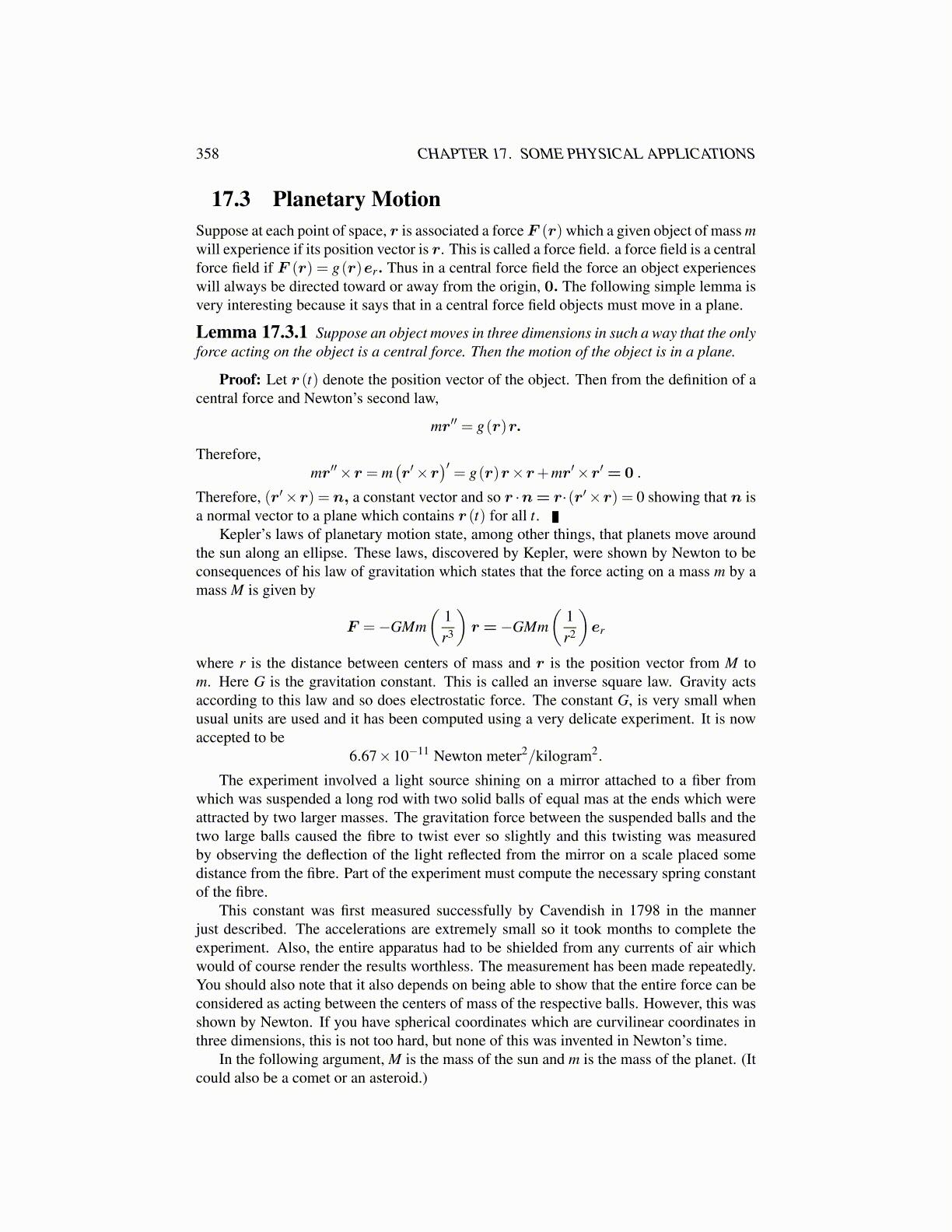
358 CHAPTER 17. SOME PHYSICAL APPLICATIONS
Now the other part of 17.4 and 17.5 implies
r′′ (t)− r (t)θ′ (t)2 = r′′ (t)− r (t)
(c2
r4
)=−k
(1r2
). (17.6)
It is only r as a function of θ which is of interest. Using the chain rule,
r′ =drdθ
dθ
dt=
drdθ
( cr2
)(17.7)
and so also
r′′ =d2rdθ
2
(dθ
dt
)( cr2
)+
drdθ
(−2)(c)(r−3) dr
dθ
dθ
dt
=d2rdθ
2
( cr2
)2−2(
drdθ
)2(c2
r5
)(17.8)
Using 17.8 and 17.7 in 17.6 yields
d2rdθ
2
( cr2
)2−2(
drdθ
)2(c2
r5
)− r (t)
(c2
r4
)=−k
(1r2
).
Now multiply both sides of this equation by r4/c2 to obtain
d2rdθ
2 −2(
drdθ
)2 1r− r =
−kr2
c2 . (17.9)
This is a nice differential equation for r as a function of θ but its solution is not clear. Itturns out to be convenient to define a new dependent variable, ρ ≡ r−1 so r = ρ−1. Then
drdθ
= (−1)ρ−2 dρ
dθ,
d2rdθ
2 = 2ρ−3(
dρ
dθ
)2
+(−1)ρ−2 d2ρ
dθ2 .
Substituting this in to 17.9 yields
2ρ−3(
dρ
dθ
)2
+(−1)ρ−2 d2ρ
dθ2 −2
(ρ−2 dρ
dθ
)2
ρ −ρ−1 =
−kρ−2
c2
which simplifies to
(−1)ρ−2 d2ρ
dθ2 −ρ
−1 =−kρ−2
c2
since those two terms which involve(
dρ
dθ
)2cancel. Now multiply both sides by −ρ2 and
this yieldsd2ρ
dθ2 +ρ =
kc2 ,
which is a much nicer differential equation. Let R = ρ − kc2 . Then in terms of R, this
differential equation isd2Rdθ
2 +R = 0.